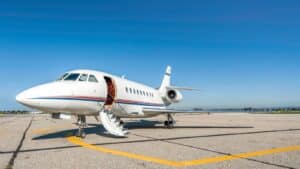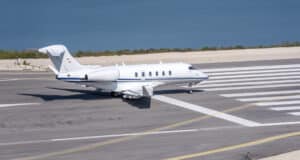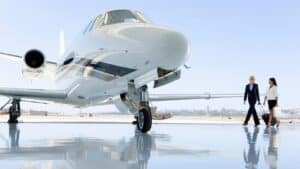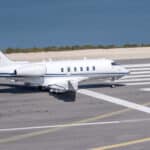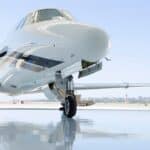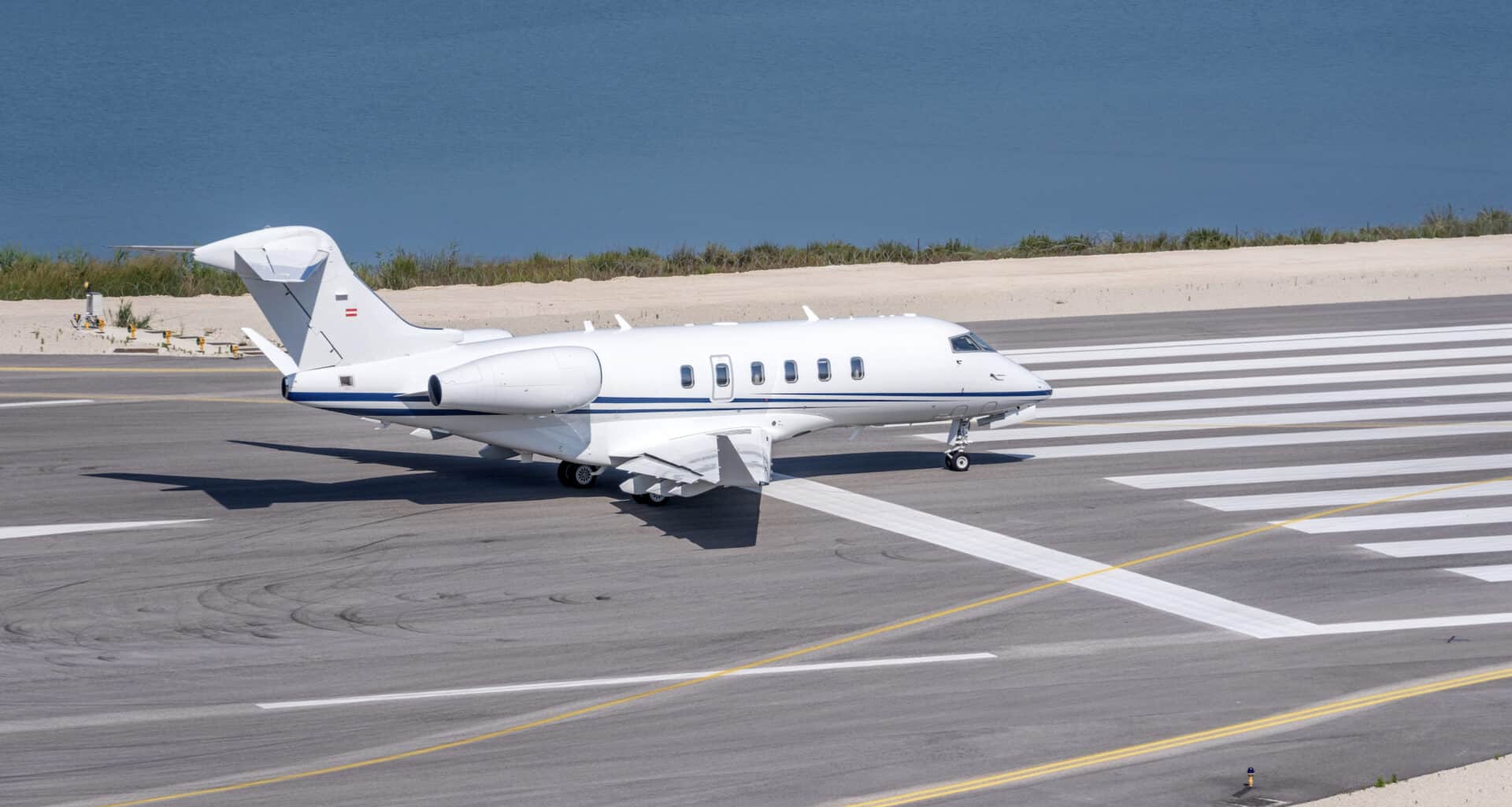Private aviation represents more than executive convenience. For businesses and high-net-worth individuals, aircraft ownership constitutes a significant capital investment with complex tax implications spanning federal, state, and local jurisdictions.
Understanding the intersection of Internal Revenue Service (IRS) regulations and Federal Aviation Administration (FAA) operational requirements proves essential for maximizing legitimate tax benefits while maintaining full compliance. The difference between proper and improper structuring can mean millions in tax liability or savings.
This guide examines private jet tax benefits, depreciation schedules, regulatory compliance requirements, and strategic considerations for business aviation in 2025 and beyond.
Private Jet Tax Implications
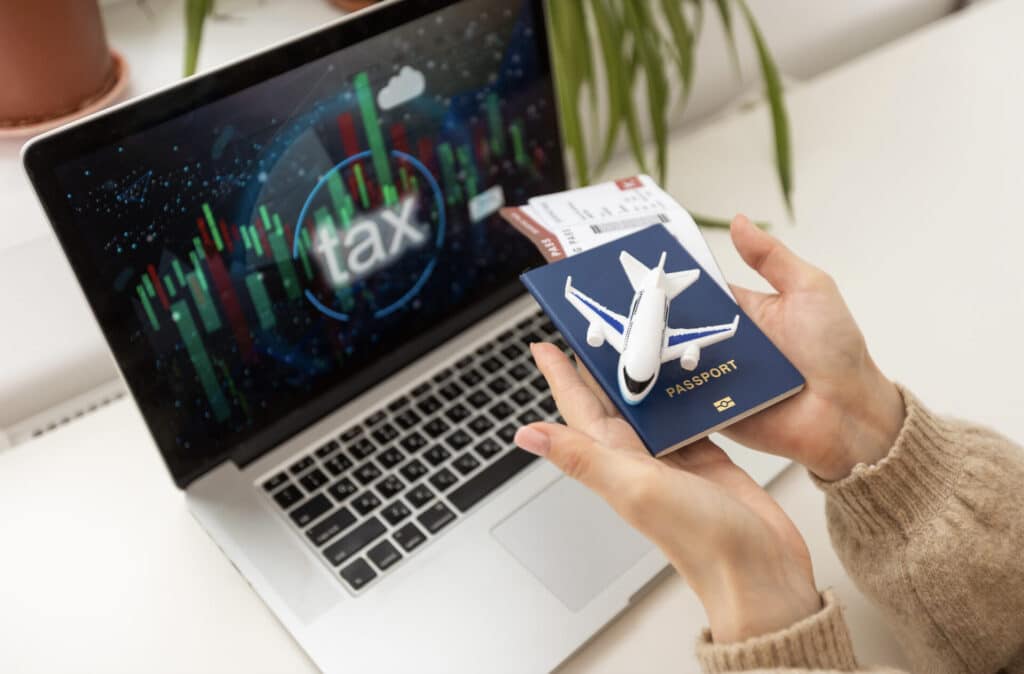
Aircraft ownership triggers four primary tax considerations that demand careful planning and ongoing compliance monitoring.
1. Personal Use Classification
The IRS distinguishes sharply between entertainment and non-entertainment business use under 26 U.S. Code § 274. Entertainment flights face stricter deduction limitations, while bona fide business travel qualifies for standard business expense treatment.
When a CEO uses a company aircraft for vacation travel, that flight generates taxable compensation for the executive. The company must calculate fair market value for the personal benefit received and report it as W-2 income, even if no cash changes hands.
Mixed-use flights require proportional allocation. A business trip extended for personal reasons demands careful documentation showing which segments serve legitimate business purposes versus personal enjoyment.
2. Imputed Income Requirements
Employees receiving personal use of company aircraft face fringe benefit taxation. Two calculation methods exist: the Standard Industry Fare Level (SIFL) method and the charter-rate method.
SIFL tables, published quarterly by the IRS, provide base rates per mile flown. This method typically yields lower imputed values but requires precise recordkeeping of actual mileage and passenger counts.
The charter-rate method uses fair market value of equivalent commercial charter services. While administratively simpler, it often results in higher taxable amounts for employees. Companies must choose consistently and document their methodology.
3. Sales and Use Taxes
Aircraft purchases trigger state sales tax obligations that vary dramatically by jurisdiction. Strategic planning around these taxes can save hundreds of thousands of dollars on multi-million-dollar acquisitions.
States like Delaware, Montana, and Oregon offer favorable tax treatment for aircraft. “Fly-away” exemptions allow buyers to avoid sales tax if the aircraft departs the state of purchase within specified timeframes, typically 48-72 hours.
Use tax obligations arise when aircraft registered in one state operate predominantly in another. Businesses maintaining primary operations in high-tax states like California face ongoing use tax exposure requiring careful compliance management.
4. Excise Tax Exposure
Improper structuring can inadvertently trigger Federal Excise Tax (FET) at 7.5% of charter value. This occurs when aircraft operations cross the line from Part 91 private operations into Part 135 commercial charter territory.
Establishing a “leasing shell” entity that charges the operating company creates commercial transactions subject to FET. The IRS scrutinizes related-party arrangements closely. Proper ownership structuring through qualified business entities avoids these pitfalls while maintaining legitimate business deductions.
Are Private Jets Tax Deductible?
Complete write-offs of private aircraft rarely exist outside specific bonus depreciation scenarios. However, legitimate business-related expenses qualify for substantial deductions when properly documented and allocated.
The fundamental requirement: demonstrate that aircraft use serves bona fide business purposes. The IRS expects companies to maintain comprehensive flight logs showing departure/arrival locations, passengers, and detailed business justifications for each trip.
For mixed-use aircraft, allocation becomes critical. If 70% of flight hours serve business purposes and 30% personal use, only 70% of operating expenses qualify for deduction. The personal-use portion requires imputed income reporting for employee beneficiaries.
Documentation standards exceed typical business expense requirements. Maintain passenger manifests, meeting agendas, business correspondence confirming trip purposes, and contemporaneous records linking flights to specific business transactions or opportunities.
What Are the Tax Breaks for Owning a Jet?
Properly structured aircraft ownership provides multiple tax benefit pathways, each with specific qualification requirements and compliance obligations.
1. Business Purpose Deductions
Operational expenses qualify for immediate deduction when aircraft use exceeds 50% qualified business activity. Deductible costs include fuel, pilot and crew salaries, insurance premiums, maintenance and repairs, hangar rental, and interest on acquisition financing.
Companies must demonstrate legitimate business necessity for aircraft ownership. The IRS examines whether commercial alternatives would reasonably serve business needs. When businesses operate in areas with limited commercial service or require schedule flexibility for time-sensitive operations, aircraft ownership passes scrutiny more readily.
Management companies provide operational services while maintaining compliance with both FAA and IRS requirements. Explore professional charter management services for expert guidance on structuring compliant operations.
2. Depreciation and Bonus Write-Offs
The Tax Cuts and Jobs Act (TCJA) introduced 100% bonus depreciation for qualified property placed in service through 2022. This provision allowed immediate expensing of aircraft acquisition costs in the first year, subject to business use requirements.
Bonus depreciation phases down under current law:
- 2023: 80% first-year deduction
- 2024: 60% first-year deduction
- 2025: 40% first-year deduction
- 2026: 20% first-year deduction
- 2027 and beyond: 0% (revert to standard depreciation)
Consider this example: A company purchases a midsize business jet for $10 million in 2024. With 60% bonus depreciation and 75% qualified business use, the first-year deduction reaches $4.5 million ($10M × 60% × 75% business use).
The critical threshold: aircraft must demonstrate more than 50% qualified business use to access bonus depreciation. Personal use, entertainment flights, and non-business travel reduce the qualified percentage proportionally.
Standard depreciation under Modified Accelerated Cost Recovery System (MACRS) uses a five-year recovery period for aircraft. Companies unable to meet bonus depreciation requirements still benefit from accelerated depreciation schedules. For detailed cost analysis, review our comprehensive guide on private jet ownership costs.
3. Federal Tax Credits
Research and Development (R&D) tax credits may apply when aircraft support qualifying research activities. Technology companies using aircraft for prototype testing, data collection, or research facility visits between operations centers potentially qualify for these credits.
The R&D credit equals a percentage of qualified research expenses, reducing tax liability dollar-for-dollar rather than simply reducing taxable income. Companies should work with specialized tax advisors to identify and document qualifying activities.
4. State Tax Incentives
Individual states offer targeted credits for aviation-related investments. These include job creation credits, economic development incentives, and aviation industry expansion programs.
States with significant aerospace industries often provide preferential treatment for aircraft purchases supporting local operations. Montana, South Dakota, and Alaska offer various registration and operational benefits beyond simple sales tax advantages.
State credits require careful analysis of residency, operational, and economic impact thresholds. Multi-state operations demand coordination with tax professionals familiar with each jurisdiction’s specific requirements.
5. Charitable Flight Deductions
Aircraft used for IRS-approved charitable purposes may qualify for deductions under specific circumstances. Humanitarian aid flights, disaster relief operations, and medical transport for qualified organizations potentially generate deductible expenses.
Strict documentation requirements apply. Organizations must hold 501(c)(3) status, flights must serve charitable rather than political purposes, and detailed recordkeeping proves essential. The value deduction equals the direct operating costs incurred, not the fair market value of charter services provided.
Tax Benefits of Chartering Instead of Owning

Charter arrangements offer straightforward tax treatment compared to ownership complexities. Businesses deduct charter expenses as ordinary and necessary business costs without navigating depreciation schedules, imputed income calculations, or ownership structure requirements.
Companies flying fewer than 100-150 hours annually often achieve better economics through charter. The break-even point between charter and ownership depends on route patterns, aircraft requirements, and operational flexibility needs.
Charter advantages include:
- Simplified compliance: No ownership tax reporting, no depreciation tracking, no mixed-use allocation
- Immediate deductibility: Charter costs qualify as current-year business expenses
- Fleet flexibility: Select appropriate aircraft for each mission without ownership commitment
- Capital preservation: Avoid multi-million dollar capital outlays and ongoing ownership obligations
Ownership benefits emerge with higher utilization:
- Depreciation benefits: Bonus depreciation accelerates tax benefits in early ownership years
- Asset control: Guaranteed availability and customized cabin configuration
- Potential appreciation: Well-maintained aircraft may retain significant resale value
- Operational flexibility: Avoid charter market pricing volatility during peak demand
Hybrid approaches exist. Fractional ownership programs and jet card memberships provide middle-ground solutions, combining some ownership benefits with charter-like flexibility.
Compliance, Recordkeeping and Best Practices
IRS audits of private aircraft deductions occur with notable frequency. High-dollar deductions and complex allocation requirements make aviation expenses attractive audit targets. Proactive compliance measures provide essential protection.
Essential Documentation Requirements
Flight logs must capture: Date, origin, destination, passenger names and business relationships, purpose of trip, and flight duration. Electronic flight management systems simplify data collection but require proper configuration and regular verification.
Business purpose documentation should include meeting agendas, signed contracts resulting from trips, correspondence scheduling business activities, and trip reports prepared contemporaneously with travel. Reconstructing business purposes months or years later during audits rarely succeeds.
Separate accounting for business and personal use provides clear allocation support. Maintaining distinct general ledger accounts for business versus personal use facilitates accurate reporting and demonstrates compliance intent.
Ownership Structure Considerations
Entity selection impacts both tax treatment and legal liability. Options include:
Direct corporate ownership: Simplest structure but exposes corporate assets to aviation liability. Deductions flow directly to the operating company.
Single-member LLC: Provides liability protection while maintaining pass-through taxation. The IRS disregards single-member LLCs for tax purposes, preserving simple reporting while shielding corporate assets.
Multi-member LLC or partnership: Enables shared ownership among multiple business entities or individuals. Complex allocation rules require careful planning and annual reporting obligations.
Delaware statutory trust: Specialized structure for aircraft ownership providing asset protection and favorable Delaware law treatment. Requires professional setup and ongoing compliance management.
FAA and IRS Dual Compliance
Aircraft operators must satisfy both aviation safety regulations and tax law requirements. The FAA governs operational authority while the IRS determines tax treatment. These regulatory frameworks sometimes conflict.
Part 91 operations allow private flight under standard general aviation rules. Part 135 commercial operations require significant additional safety infrastructure, crew qualifications, and operational procedures. The distinction matters critically for tax purposes—improper Part 135 classification triggers excise taxes and different expense treatment.
Management companies navigate these complexities professionally. They maintain required insurance, employ qualified crews, handle regulatory filings, and structure operations to optimize both safety compliance and tax efficiency. Review top aircraft management companies for professional operational support.
Real-World Tax Planning Scenario
Consider a private equity firm acquiring a Gulfstream G280 for $24 million in 2024. The firm projects 200 annual flight hours with 85% qualified business use (corporate meetings, site visits, transaction due diligence) and 15% personal use by senior partners.
Year 1 Tax Benefits:
Bonus depreciation: $24M × 60% (2024 rate) × 85% (business use) = $12.24M first-year deduction
Operating expenses: Estimated $1.2M annually (fuel, crew, maintenance, insurance, hangar) × 85% business use = $1.02M deductible
Total first-year deductions: $13.26M
Tax Savings: At 35% combined federal and state rate = $4.64M first-year tax savings
Compliance Obligations:
Personal use allocation: 15% of operating costs = $180,000 annual fringe benefit for partners. Each partner receiving personal flights reports proportional W-2 income calculated under SIFL or charter-rate methodology.
Documentation requirements: Flight logs for 200 flights, business purpose memos, passenger manifests, meeting confirmations, and quarterly reconciliation of business versus personal use percentages.
This example illustrates how proper structuring generates substantial tax benefits while careful compliance management prevents adverse tax consequences or audit exposure. The numbers underscore why professional guidance proves essential for aircraft ownership decisions.
Work with Aviation and Tax Professionals

Aircraft ownership and operation require coordinated expertise across aviation operations, tax planning, and regulatory compliance. No single advisor masters all disciplines.
Your advisory team should include:
Aviation tax specialists: CPAs or tax attorneys with specific aircraft ownership experience who understand IRS regulations, depreciation rules, and allocation requirements unique to aviation.
Aircraft management companies: Professionals handling operational compliance, crew management, maintenance coordination, and regulatory filings with FAA authorities.
Aviation attorneys: Legal counsel specializing in aircraft transactions, ownership structuring, registration, and regulatory compliance across federal and state jurisdictions.
Aircraft brokers and acquisition specialists: Experts who structure purchases tax-efficiently, negotiate favorable terms, and coordinate complex multi-party transactions.
Trusted aviation service providers deliver comprehensive support throughout the aircraft lifecycle. From initial acquisition through ongoing operations and eventual sale, experienced partners protect your investment while maximizing available tax benefits.
For guidance on structuring aircraft investments, optimizing tax treatment, and maintaining regulatory compliance, consult professionals who specialize in business aviation. Explore our directory of certified charter operators and management companies serving business aviation clients.
Key Takeaways for Business Aviation Tax Planning
Private aircraft ownership delivers legitimate tax benefits when structured correctly and operated compliantly. Key principles guide successful aviation tax planning:
Document everything: Comprehensive recordkeeping provides essential audit defense. Flight logs, business purpose documentation, and contemporaneous records prove more valuable than perfect tax planning if compliance ever faces scrutiny.
Maintain qualified business use: The 50% threshold determines access to bonus depreciation and accelerated write-offs. Structure operations to maximize legitimate business utilization.
Understand phase-out timing: Bonus depreciation continues declining through 2027. Near-term acquisitions capture larger first-year deductions than delayed purchases.
Consider alternatives: Charter, fractional ownership, and jet card programs provide different tax profiles. Compare total economics across ownership structures before committing to purchase.
Engage specialists early: Tax planning works best before aircraft acquisition. Restructuring after purchase limits available strategies and may trigger adverse tax consequences.
Monitor ongoing compliance: Annual requirements for depreciation, imputed income reporting, and business use allocation demand continuous attention throughout ownership.
For broader context on aviation market dynamics and regulatory developments, review our coverage of aviation industry trends affecting business flight operations.
Frequently Asked Questions
Are private jets tax deductible in 2025?
Private jets qualify for partial tax deductions when used for legitimate business purposes. Operating expenses like fuel, maintenance, insurance, and crew costs are deductible proportional to business use percentage. Aircraft must demonstrate more than 50% qualified business use to access bonus depreciation, which stands at 40% for acquisitions in 2025.
How does bonus depreciation work for aircraft purchases?
Bonus depreciation allows accelerated first-year write-offs of aircraft acquisition costs. Under current law, 2025 purchases qualify for 40% bonus depreciation, declining to 20% in 2026 and expiring completely in 2027. Aircraft must serve qualified business use exceeding 50% to access these benefits. A $10 million aircraft with 75% business use yields $3 million first-year deduction in 2025.
Can I claim tax deductions for charter flight
Yes, charter flights for business purposes qualify as ordinary and necessary business expenses, fully deductible in the year incurred. Charter provides simpler tax treatment than ownership because it avoids depreciation calculations, imputed income reporting, and mixed-use allocation requirements. Documentation should show business purpose, passengers, and trip objectives.
What percentage of private jet use qualifies for business deduction?
The IRS requires more than 50% qualified business use to access bonus depreciation benefits. Any business use percentage allows deduction of proportional operating expenses. For example, 60% business use makes 60% of fuel, maintenance, and crew costs deductible. Entertainment use faces stricter limitations under 26 U.S. Code § 274 even when business-related.
Which states offer aircraft sales tax exemptions?
Delaware, Montana, Oregon, Alaska, and New Hampshire provide favorable sales tax treatment for aircraft. Many states offer “fly-away” exemptions allowing tax-free purchases if aircraft depart within 48-72 hours. Each state maintains different rules regarding registration, operational requirements, and use tax obligations. Consult tax professionals familiar with specific state regulations before structuring purchases.
What is the difference between Part 91 and Part 135 for tax purposes?
Part 91 governs private operations without compensation or hire, treated as business asset use. Part 135 covers commercial charter operations subject to Federal Excise Tax at 7.5%. Improper structuring, such as leasing aircraft between related entities, can inadvertently trigger Part 135 classification and associated excise taxes. Ownership structure must carefully preserve Part 91 status for most business aviation operations.
How do I report personal use of company aircraft?
Companies must calculate fair market value of personal flights using either the Standard Industry Fare Level (SIFL) method or charter-rate method. This value appears as compensation on the employee’s W-2, subject to income and payroll taxes. Companies maintain records showing allocation between business and personal flights, typically reconciled quarterly to ensure accurate year-end reporting.
Can I deduct 100% of a private jet purchase?
Complete first-year deduction was possible through 2022 under 100% bonus depreciation. In 2025, maximum first-year deduction reaches 40% of acquisition cost (declining to 0% by 2027). The full purchase price never becomes deductible in a single year for aircraft failing to meet business use thresholds. Standard five-year MACRS depreciation applies when bonus depreciation expires or doesn’t qualify.
Important Disclaimer
This article provides general information only and should not be relied upon as tax, legal, or accounting advice. Tax regulations change frequently, individual circumstances vary significantly, and specific fact patterns determine actual tax treatment.
Consult qualified tax professionals, aviation attorneys, and certified public accountants before making aircraft acquisition decisions or structuring aviation operations. Neither this publication nor its contributors assume liability for decisions made based on information presented herein.
Tax planning strategies discussed reflect federal law as of January 2025. State and local regulations vary by jurisdiction. IRS interpretations and enforcement priorities change over time. Professional guidance tailored to your specific situation proves essential for compliance and optimization.
Meet the article authors/editors/reviewers:
-
Radu Balas: Author
Pioneering the intersection of technology and aviation, Radu transforms complex industry insights into actionable intelligence. With a decade of aerospace experience, he's not just observing the industry—he's actively shaping its future narrative through The Flying Engineer.
View all posts
-
Cristina Danilet: Reviewer
A meticulous selector of top-tier aviation services, Cristina acts as the critical filter between exceptional companies and industry professionals. Her keen eye ensures that only the most innovative and reliable services find a home on The Flying Engineer platform.
View all posts
-
Marius Stefan: Editor
The creative force behind The Flying Engineer's digital landscape, meticulously crafting the website's structure, navigation, and user experience. He ensures that every click, scroll, and interaction tells a compelling story about aviation, making complex information intuitive and engaging.
View all posts





